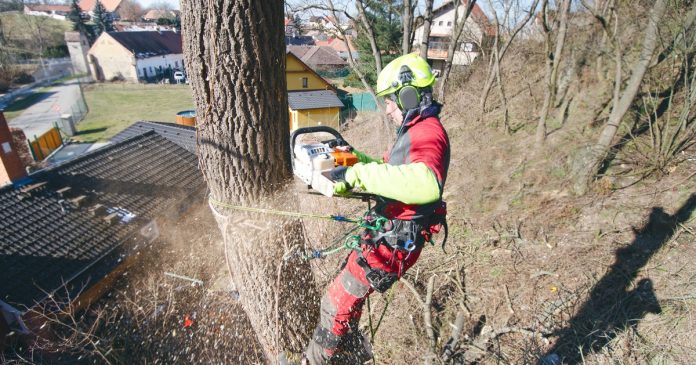A few years ago, we had a major ice storm in November around our farm. The result was a power outage that lasted almost a day, plus hundreds of branches on the ground around the farm that were broken by the heavy weight of the ice.
Some of these branches fell on overhead power lines around the farmstead, making the power outage more difficult to repair.
That’s why this fall I hired a local arborist with a bucket truck to spend a few hours around our farm trimming dead and diseased trees that were too large and too high for me to handle safely, along with removing branches that were hanging over some of our overhead power lines to the barn and garage.
It was a preemptive strike against potential ice and snowstorms that would cause those same trees to “self-prune” at the wrong time in the wrong place. We’ve worked with the same tree service over the years, calling them about every other year to do maintenance pruning of our mature, larger trees.
Here are five tips for working with your local tree service professionals to keep the big trees under control, and prevent damage to power lines and farm structures:
1. Know your limitations. Many farmers have industrial-grade equipment with the ability to handle all kinds of tough jobs. I’m all about do-it-yourself. However, if you do not have the proper equipment or safety gear — or if you lack the proper training to handle downing a large, mature tree or cleaning up after storm damage on higher limbs — know when it is time to call in the professionals who do this kind of work every day.
Safety should always be your utmost goal, so often it saves time, money and worry to hire those who do these tough jobs for a living. An errant limb hung up in another tree — or falling at the wrong time or in the wrong place — can cause severe damage or worse for those who are working on the trees. Plus, it can also fall unexpectedly on adjacent farm structures or equipment.
2. Give plenty of lead time. When you call the professionals, do not expect the tree service to show up immediately. It is always best to call far in advance, giving them plenty of lead time. I called the tree service in late fall this past year, expecting them to do the work sometime in early winter.
In the case of storm-damaged trees or hazard trees, communicate as quickly as possible with the tree service to get on their work list, because it is likely that there are many similar jobs in the same vicinity. If the tree is truly a potential hazard, they may be able to bump you up to a higher priority and get to your job sooner.
3. Do a “walk-through” in advance. In advance of their visit or the day they arrive to do the work, be sure to walk through the project with the supervisor, noting any special circumstances such as structures that are at risk or fences that may be an obstacle for workers.
Show them the exact trees they will be working on, describe any hazards that might come into play and ask questions to make sure everyone is on the same page.
4. Clear a path. Make way for the bucket truck or telehandler to get to the site, if possible. That might mean clearing branches ahead of time or moving parked vehicles or equipment from the site.
Anything you can do in advance to make the job easier will save time on their end and save you money in the long run.
5. Have a plan for the slash. Tree services will often ask if you want the slash or brush dropped in a specific location, and perhaps how small you need the branches cut up for removal or utilization.
I like to ask them to simply drop the tree in place, if possible, and I can cut up the wood or offer it to someone else for utilization. I also have the ability to clear the slash myself and burn it after we have snow cover in a location of my choice.
Developing a good relationship with a local arborist or tree service professional will pay dividends in healthier forest resources around your farmstead and having the ability to clean up after storms, and even more importantly, provide preemptive pruning to mitigate storm damage before it happens.
www.farmprogress.com
https://www.farmprogress.com/commentary/5-prep-tips-for-tree-service-trimming













